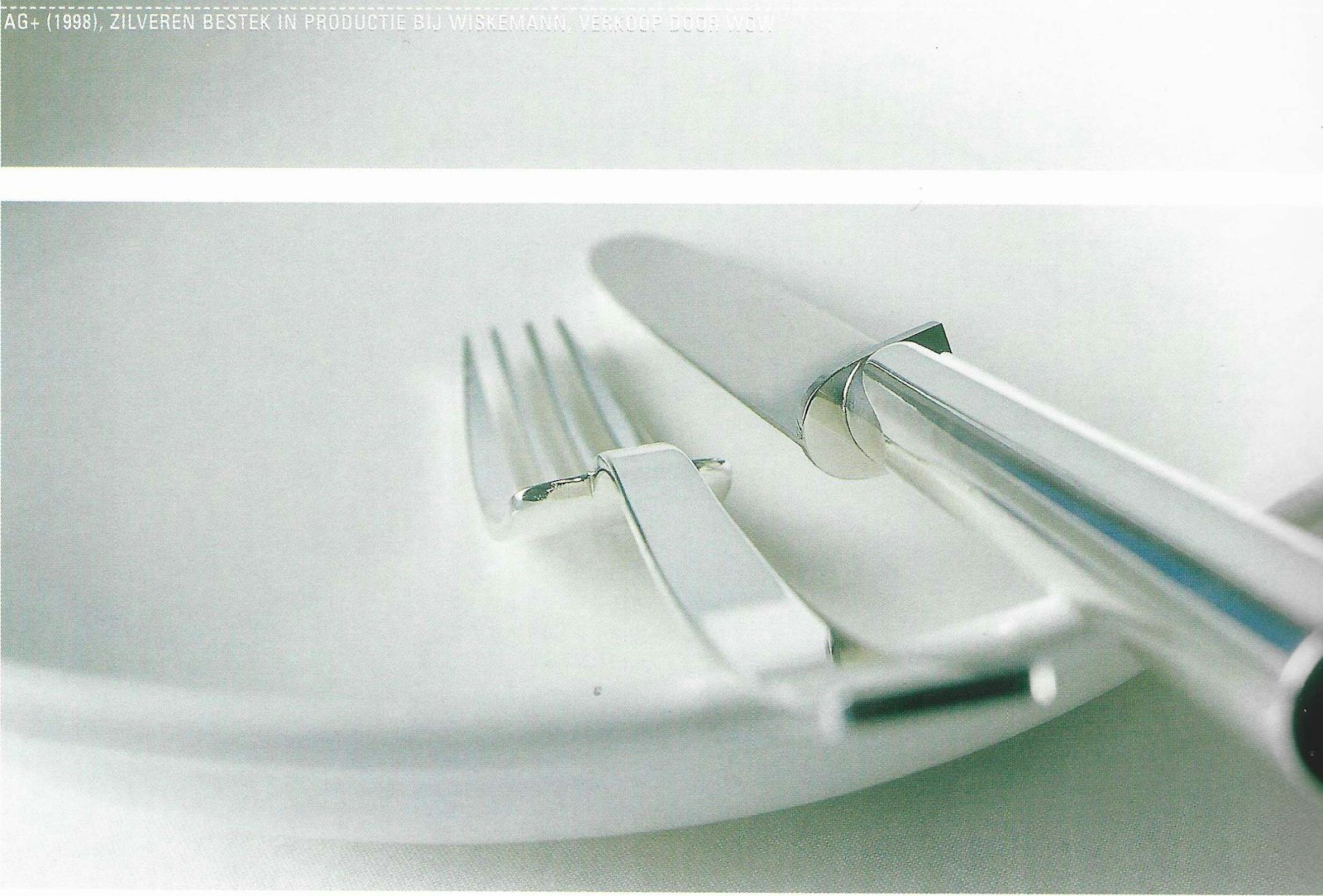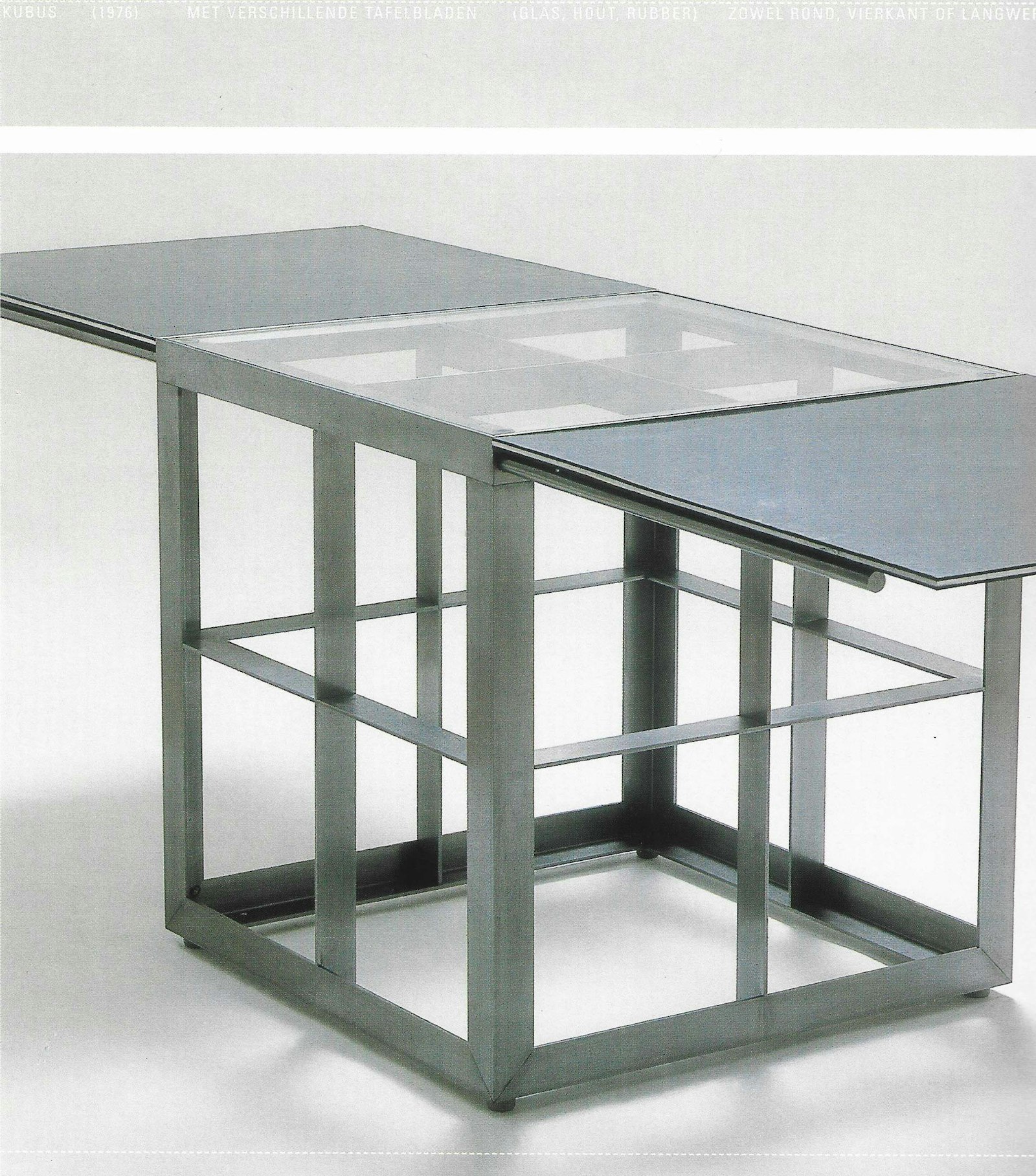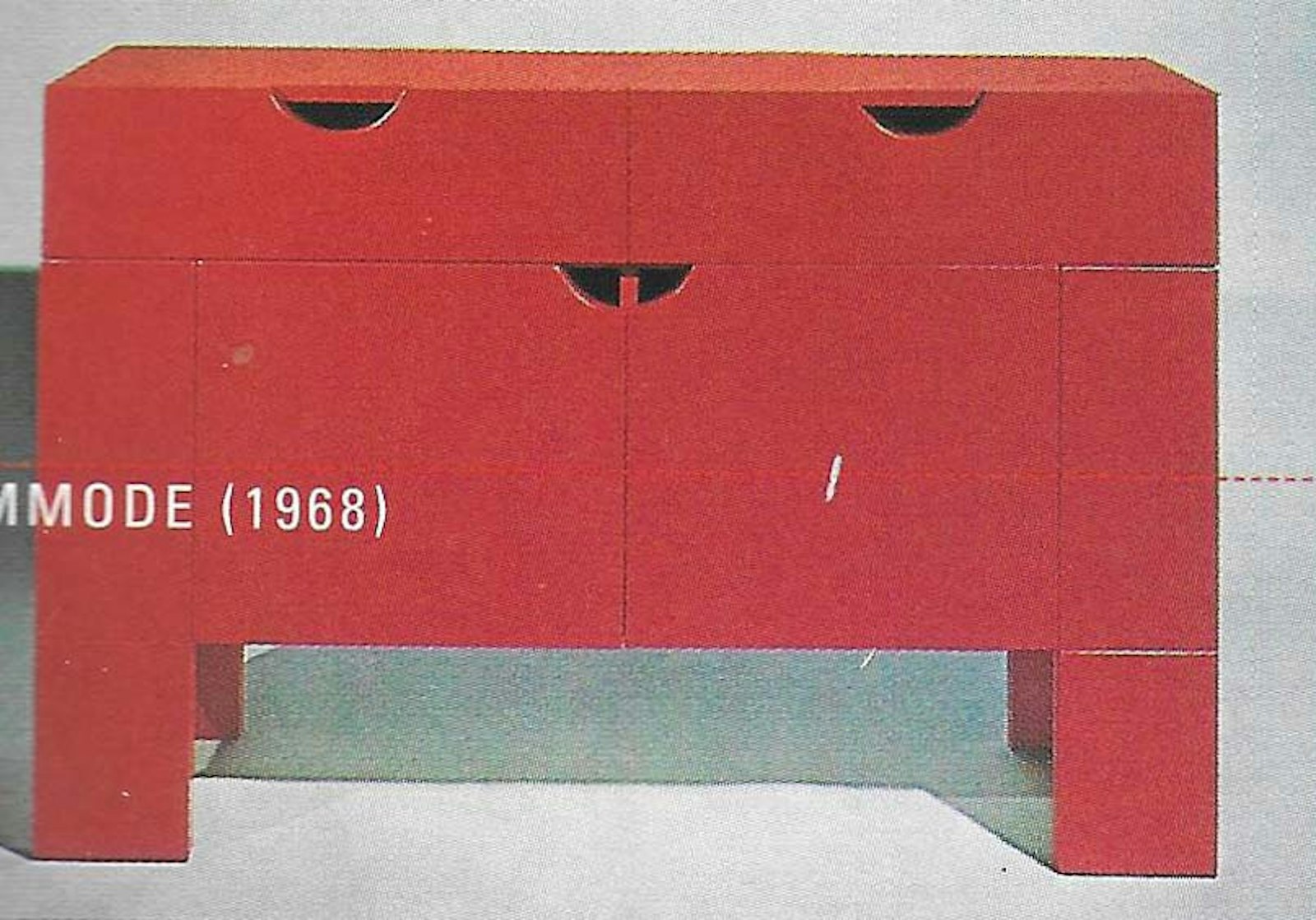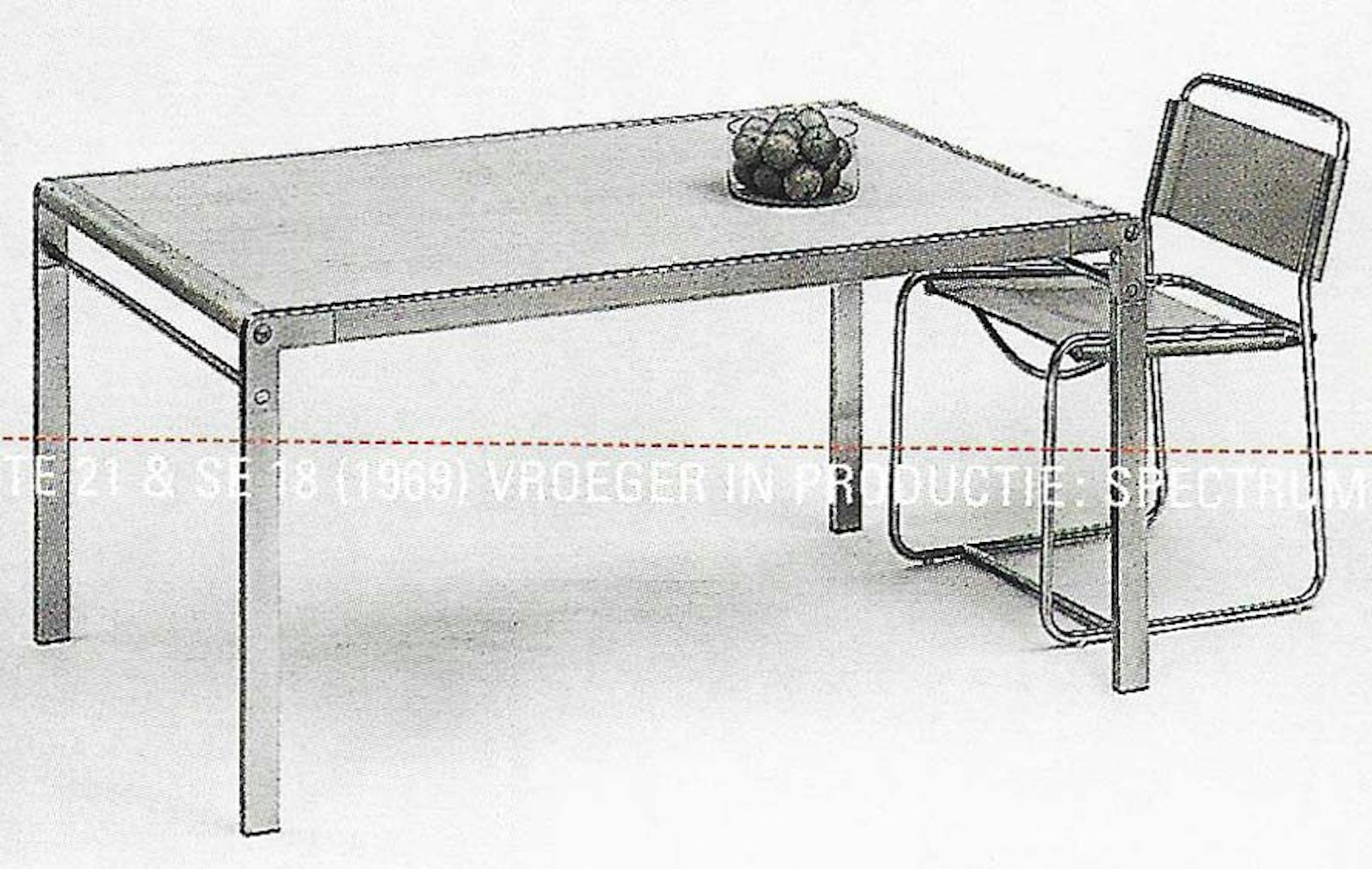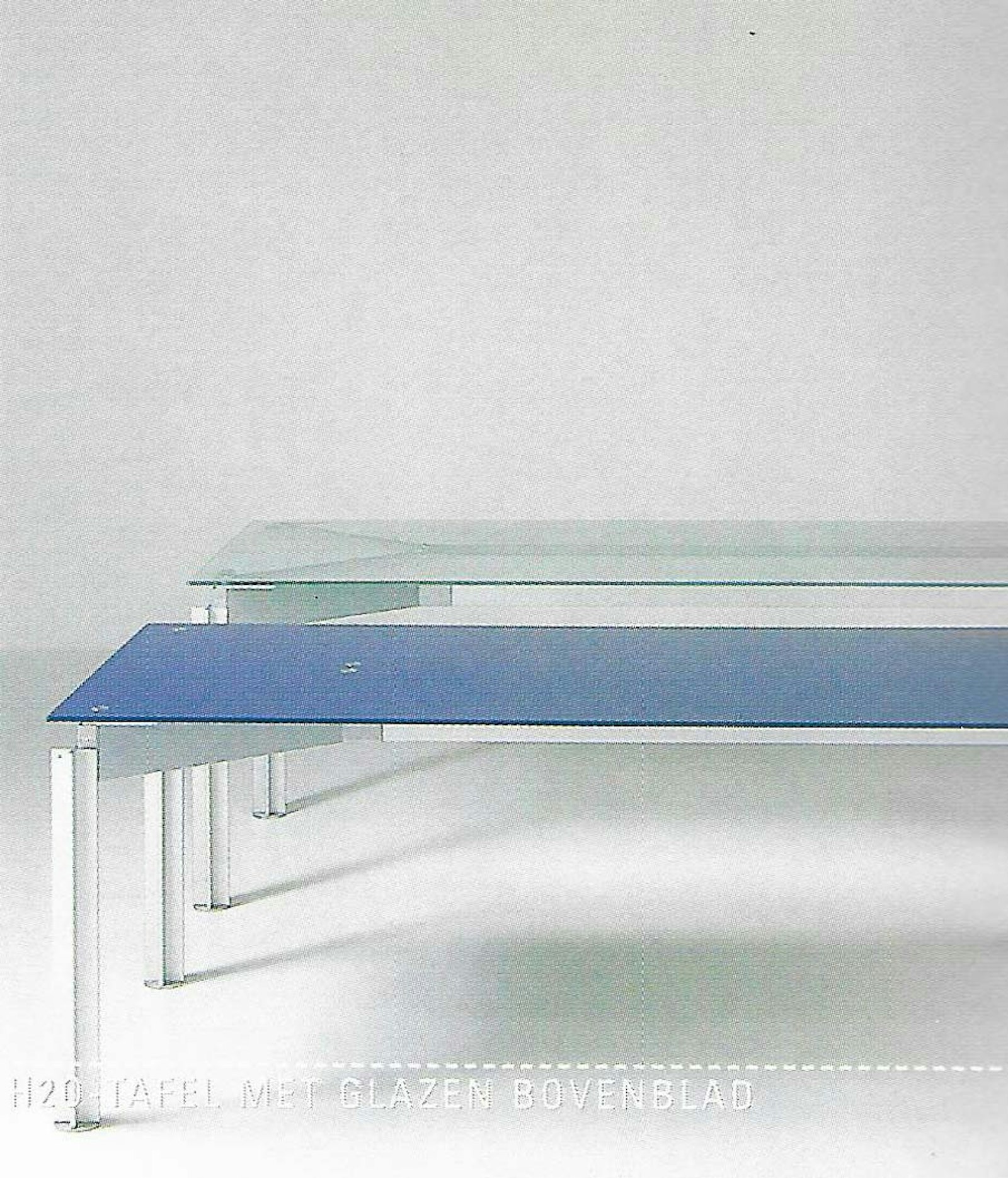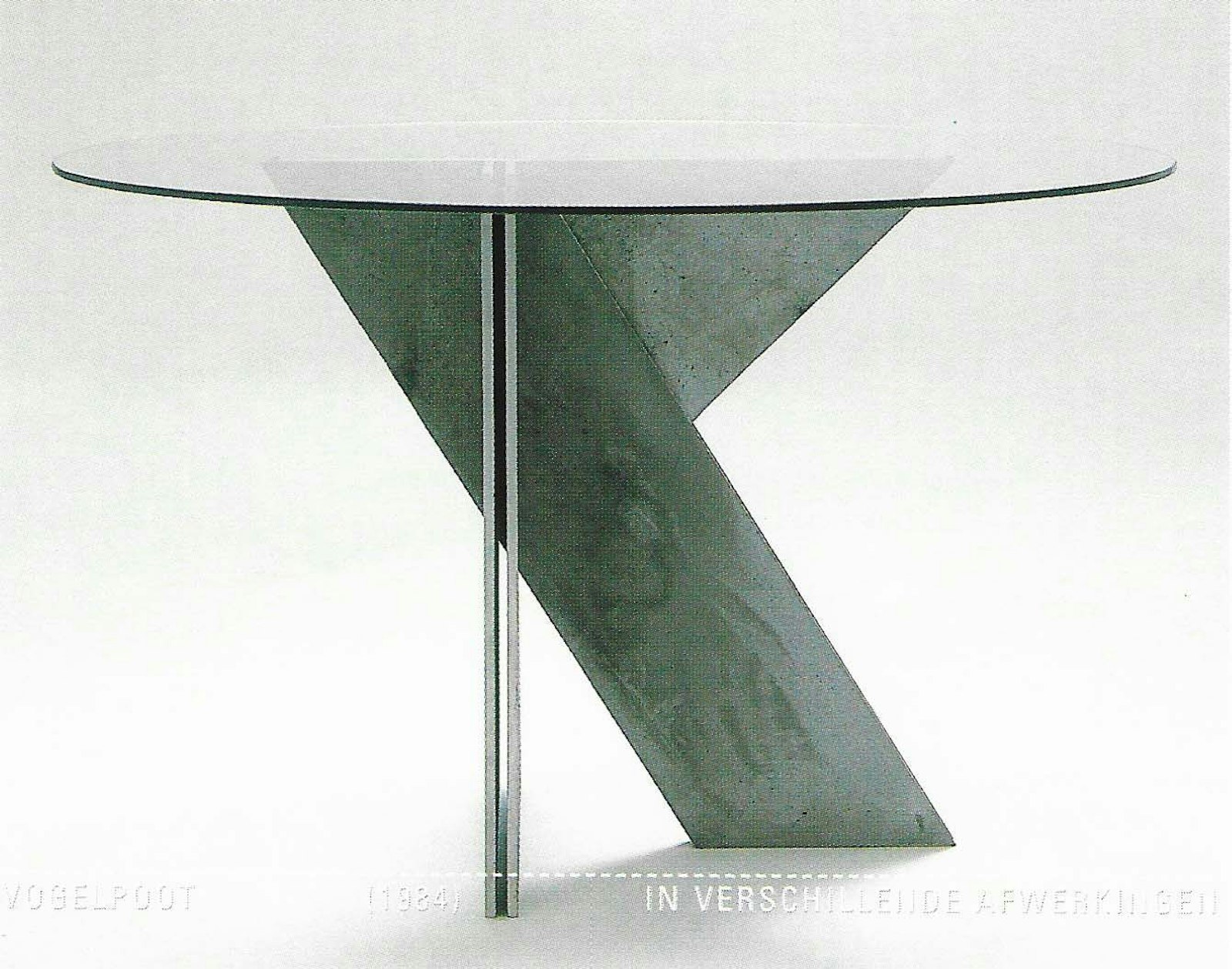de Velde
Bataille&ibens
The award of the "Henry van de Velde Career Prize" to the duo Claire Bataille and Paul ibens, Bataille&ibens for the connaisseur, illustrates the power of furniture design in Flanders.
Every new design should make life more pleasant
lt almost goes without saying that Bataille and ibens are both interior designers, which in the world of contemporary furniture design is the most suitable background. For both of them, next year marks almost 40 years since they graduated from the Antwerp School of Architecture, the present Henry van de Velde lnstitute, and they have filled their careers richly, creating innovative interiors and working with architecture. lnteriors are, however, rather ephemeral because over the years they tend to be dismantled. lndeed a number of B&i creations have already been taken apart. Fortunately, they also designed a number of objects and these are generally still in existence. This "van de Velde Prize" is also in recognition of these objects.
Not much has been written about B&i apart trom in lifestyle magazines. The most notable text is that by Christian Kieckens for "Stichting Architectuur Museum", 1988: "( ... ) These interventions by Claire Bataille and Paul lbens are clearly statements in the divisible duality between indoors and outdoors, between enclosure and abandonment, between silence and proclamation. They are autonomous stances in opposition to one another. They express intentions. They are "architectures intérieures" that assign well-defined new properties to the existing ones: a domestic character in living spaces, an architectural concept for shops, a living environment in office spaces. Furniture also points out the location of transactions, of individual relationships. lt makes the functional aspect of the space more explicit. Materials, colour, light and shade bestow a poetic aspect on the whole. Details underscore craftsmanship. Proportions justify each component as part of the whole. (...)".
The content of the article below is therefore largely based on the conversation I had with Paul ibens on 6 July at his offices in Antwerp's Vekestraat. Claire Bataille was away on holiday. When you look at their CV, it is clear that they are primarily interior designers. Only with the foundation of BVBA ibens & Bataille, in 1995, which devoted itself specifically to the design of furniture and objects, did they start to put a new object onto the market almost every year.
Origins
Between 1962 and 1969, the two worked together only occasionally. They knew each other trom college days, as bath had taken courses that were strongly oriented towards architecture. Jules de Roover (1913), then in close contact with Renaat Braem (1910-2000), lay at the basis of this: he moulded their ideas regarding interior design and those were mainly ideas and perceptions that had their origins in architecture. Architecture as the mother of all arts is no false claim in their eyes. For this reason, you will never find decorative interior designs by them, but fundamental spatial creations. Furniture has never been an end in itself, but serves as a functionary in the architecture of the interior. I refer to the text by Kieckens above.
1968 saw their first true collaboration. The Daily Mirror organised a competition to design an armchair for a man and a woman. B&i sent in two leather chairs, which they had previously designed for a busy pub, but which had faltered at the prototype stage.
The independent life of their furniture has aften arisen in this way. They produced designs for a private interior and later used an item of furniture from such a design to be put into production by the industry which itself came soliciting for this! They put no effort whatsoever into getting their designs onto the market. Furniture design was a byproduct, it was never their main business. lt is only quite recently that manufacturers such as BULO and Obumex have came knocking on their door to design totally new furniture. In the past, in the early part of their career, the only commissions were trom the furniture firm of Spectrum, near Bergeyk in the Netherlands. This company was the exception. Spectrum was a kind of assembly furniture factory that wanted to produce based on a philosophy of "furniture for the people". However, things took a different turn, as did the collaboration with De Ploeg, the famous Dutch textile manufacturer. Whatever the case, Spectrum commissioned several designs including a chest of drawers and a chair trom B&i in 1968.
Influences
B&i experienced major influences at the Eurodomus fair in ltaly, which they attended every year. lt was a trade fair aimed at avantgarde design, it was the period when plastics were in the ascendant.
Alongside the pure design affinity, they developed a link with the plastic arts. During the 1960s, they were in contact with Jef Verheyen, who was very impressed by the ZERO events where artists such as Macke, Uecker and Piene were active. B&i met some of these artists, such as Uecker. In terms of content, they handled designs such as "Het niets", "Wit", the dynamic structure and the mobility of light (Phil Mertens in Kunst in België na 45, [Post-war Art in Belgium] p.85). lt felt a noticeable mark on their work, which translated into a formal, spatial nihilism that is nowadays interpreted as minimalism. lt is a design that effaces itself or at any rate does not attempt to be aesthetic/decorative, but harks to the fundamental form. Surplus is eliminated. Functionality and scientific rationality are incontrovertible values in such a philosophy.
As designers, they also believe strongly in contact with the material. lt is a contact that can give rise to a more logical design. Parallel to his architecture studies, he therefore studied sculpture, worked with clay and followed silver-smithing with his brother Wim lbens (1934-1997). Claire Bataille followed evening classes in Monument at the Antwerp Academy. Each material has its own consequences for form, which you have to take account of, in his opinion.
On the other hand, B&i had little contact with other furniture designers of the period, such as Pieter De Bruyne (1931 - 1987) and Emiel Veranneman (1924) or others. The furniture scene remained beyond their circle. However, they were known to the Design Center where they were awarded a "Gold lnsignia" in 1978 for a prefab system which allowed them to buiId in a minimum of time and with a minimum of materials.
Architecture is the mother of all the arts
Through their architectural activities, B&i have created a huge range of possibilities. Their approach to furniture design is completely different from the approach of a product developer or an industrial designer. Both think that an industrial designer takes more account of the production restrictions or the possibilities of a product and in particular with its mass production. B&i uses architecture as the starting point in all its designs, even in the designs for Spectrum and BULO, although these were designed divorced from any architecture. The first contact with BULO came in 1993. The company wanted to refresh its relatively dull range, with new office furniture. B&i started from the simplest, most fundamental elements, the basic form of the table, a plane on four legs.
Of course, the product became very much more complicated, because it had to meet a slew of standards and requirements for the national and international markets. Thus, the desktop for example had to be adjustable to four different heights. This "H20" office furniture heralded the start of innovation in BULO's range. lt became so successful that it is still in production.
The commission for silverware in 1997 came via Slegten and Toegemann. From the knowledge that little contemporary silver cutlery is designed and eventually taken into production, they were asked to came up with a proposal. This was eventually accepted. The cutlery was either silver-plated onto a care of brass or was executed in solid silver by Wiskemann.
The set of crystal glasses was commissioned by way of the same intermediary as the silver cutlery. For both it was a wonderful experience to be able to work with a material such as crystal. lt is attractive and has a certain strength. In the crystal glasses, they use the Golden Section from the foot through the stem to the bowl. The stem has, for example, an indentation for the thumb to give a pleasant feel for the person holding the glass and this is an important aspect of design for B&i. The indentation also creates an extra light facet in the crystal giving the design even more beauty. And in the future, a layer of coloured glass is to be coated onto the stem, revealed Paul ibens.
Mode of operation
The Golden Section lies atthe basis ofthe various farms and designs of B&i. Moreover, together with brother Wim lbens, sculptor, silversmith and founder of the silversmith department at the Antwerp Academy, they carried out much research into Le Corbusier's Modulor. They investigate its ratios in fine detail and read almost all the theories about it. They judged that, if you mastered these philosophies of form, you would also have the keys to rest, harmony and simplicity in the creation. lt is, however, no magic formula.
A fine example is their latest project, a set of plates commissioned by WOW, a new company and publishing house for interior products. At the basis of it lies the ratios of the Pyramid of Cheops, which fits perfectly with the ratios of the Golden Section. You need to see the drawing to understand this. Thus the ellipse of the plate is generated by joining together well-defined points from a number of projections from the pyramid. The bowl of the plate uses these ratios too. The material used is porcelain, and that pleases them because it suggests a kind of relationship with crystal in terms of strength and feel. There is no pattern on the plate itself. When B&i take a commission, they leave little to chance. They do not just supply the client with a sketch that he then has to put up with. No, sketches and conversations between the two parties enable them to analyse a commission, in order eventually to reach a consensus and create a model. Paul ibens stresses that no one else intervenes in the creative process. He does not think that would be correct. A product is either entirely B&i or it is not B&i at all. Modest as they are, they think that it goes too far to have their names on the products designed, as has been asked of them a few times.
At the prototype stage, they call on industrial designers to make a mock-up in plastic and then later to make the moulds. Their office is not equipped to do that kind of work. They also take thorough account of the ergonomics of a new object. Every new design must be more pleasant to use and improve life, otherwise there is no point in making it, thinks Paul ibens. Their latest design is a commission from and for himself. Paul needed a tabIe and bench. He alone set the requirement that the furniture must be easy to transport- and thus must be easy to disassemble and this with an eye toa possible future production.
In the end they opted for materials such as "fired wood" (instead of tropical wood), stainless steel and plastic. This design is currently at the prototype stage.
lt is in any case clear evidence that B&i feels very comfortable in its role as a product designer. However, architecture is still the mother of all the arts.
